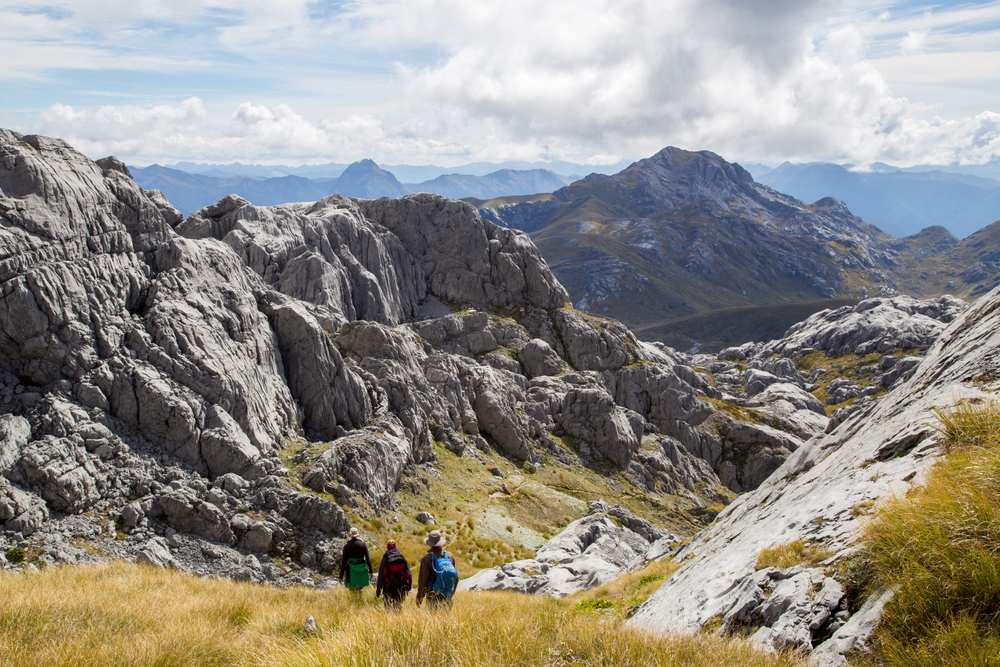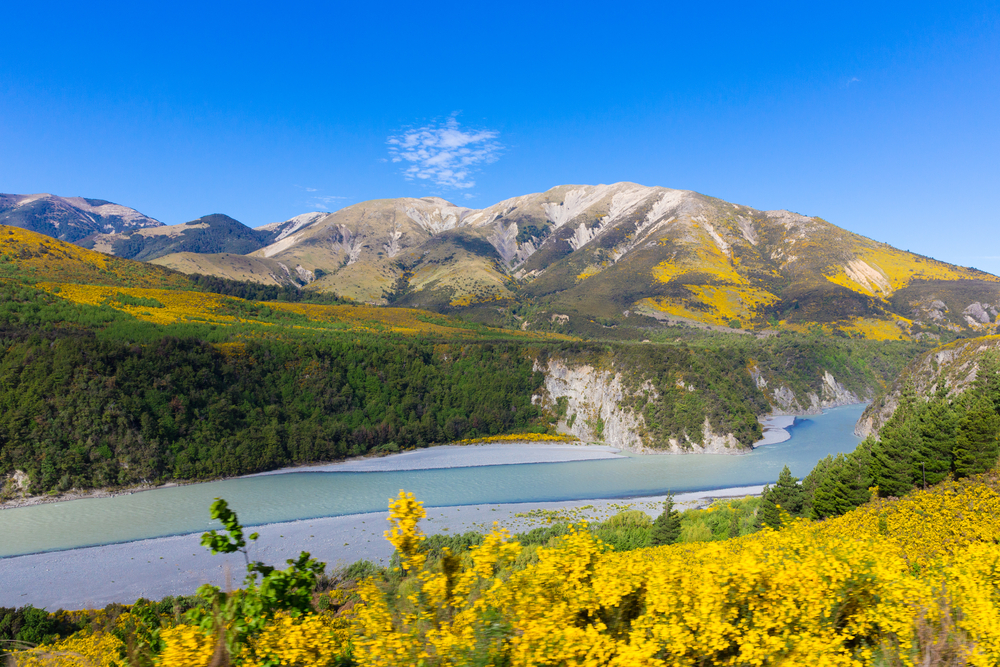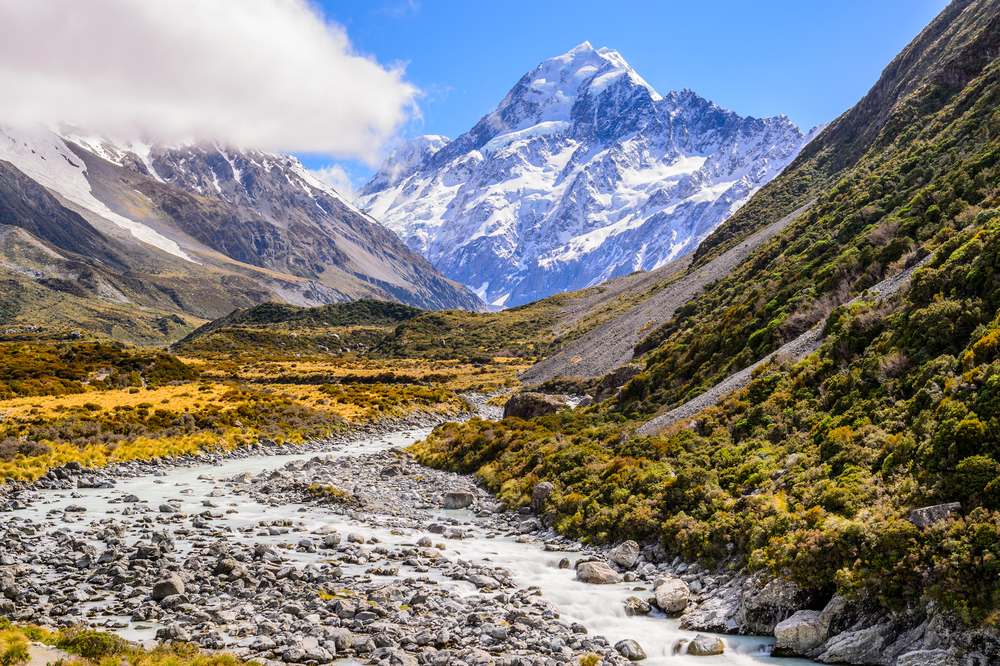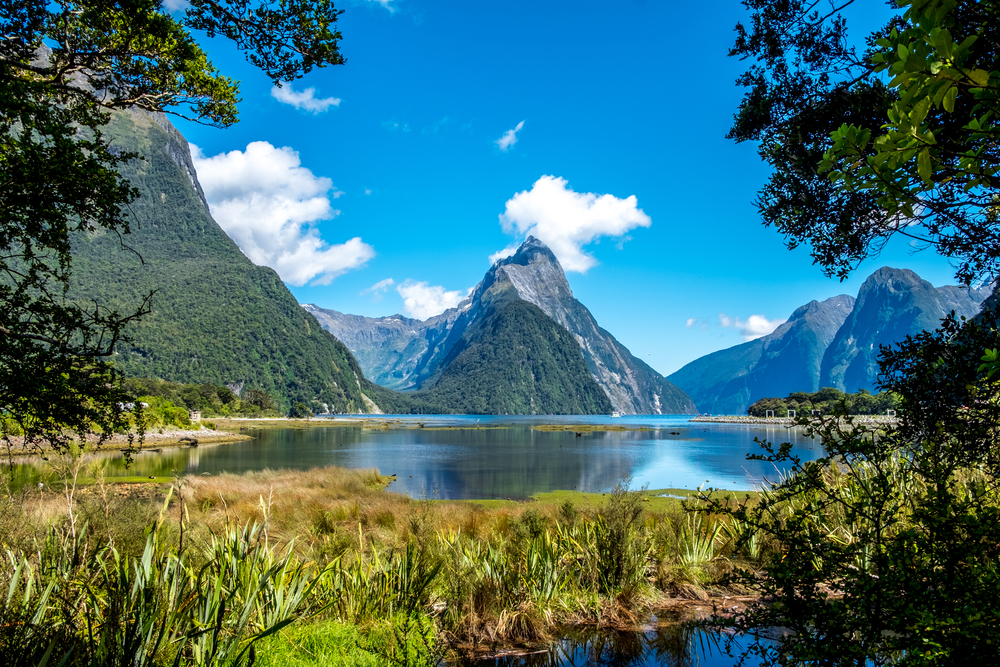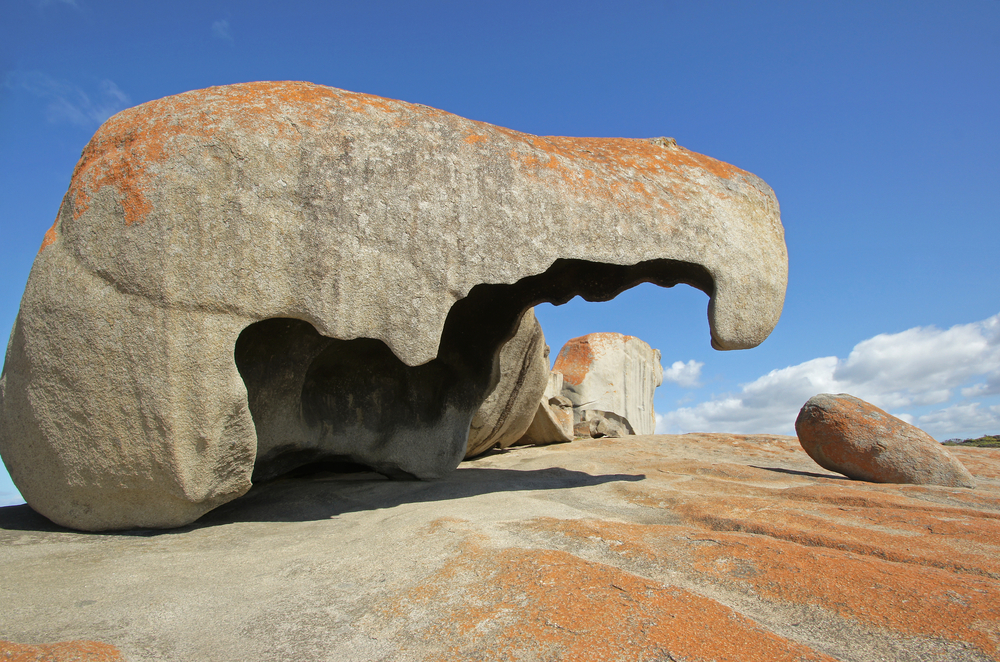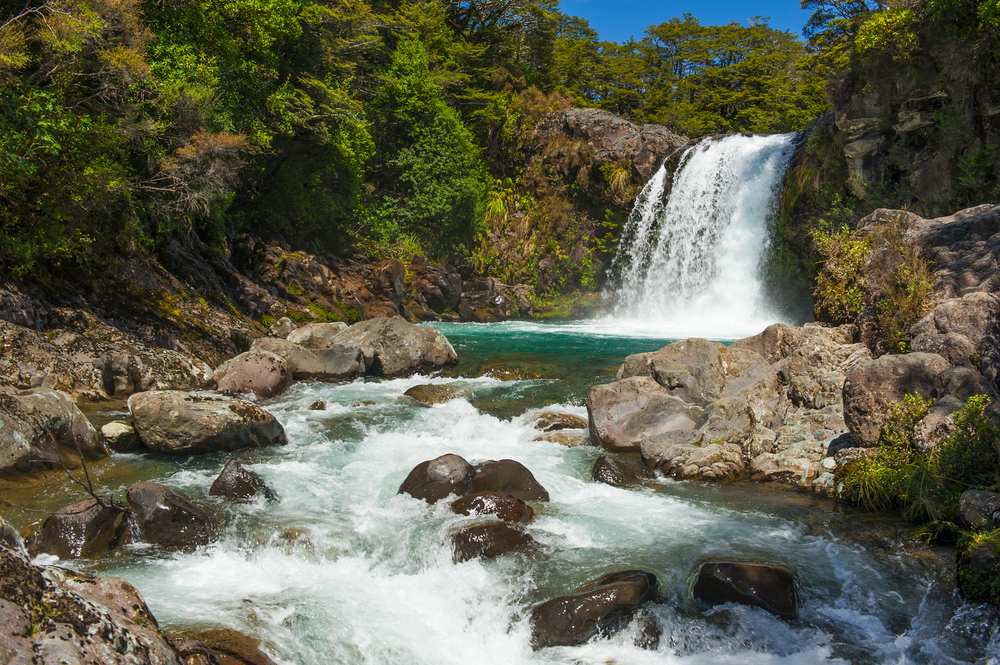Kahurangi Overview
Kahurangi National Park, located in the northwestern region of New Zealand’s South Island, is the country’s second-largest national park, covering approximately 1,750 square miles (4,515 square kilometers).
The name “Kahurangi” means “treasured possession” in Māori, a fitting tribute to the park’s breathtaking landscapes and ecological richness. Established in 1996, the park spans the rugged coastline along the Tasman Sea to the mountainous interior, featuring a vast wilderness that remains largely untouched.
It stretches from Golden Bay in the northeast to the Buller River in the south, encompassing diverse geological formations, including New Zealand’s oldest sedimentary rocks and extensive cave systems.
The terrain of Kahurangi National Park is incredibly varied, from coastal flats and lush rainforests to dramatic limestone karst formations and alpine ridges. One of the park’s most iconic features is Mount Owen, the highest peak in the park at 6,030 feet (1,838 meters), with its striking marble landscape and extensive cave networks, including the famous Bulmer Cavern, the longest known cave system in New Zealand.
Another notable landmark is Mount Arthur, which features a labyrinth of limestone formations and an extensive underground cave system. The Heaphy River meanders through the park, creating stunning waterfalls and scenic gorges before reaching the rugged coastline. Dense beech and podocarp forests dominate the lower elevations, while alpine tussock and subalpine scrub thrive in the higher regions, creating a striking contrast of vegetation types.
Kahurangi National Park is home to an extraordinary range of wildlife, including several species found nowhere else in the world. Among its most famous inhabitants is the great spotted kiwi (roroa), a rare and elusive nocturnal bird that thrives in the remote areas of the park. Other notable bird species include the whio (blue duck), which can be spotted along fast-flowing rivers, and the kea, an intelligent and curious alpine parrot known for its playful nature.
The park also provides habitat for the South Island kaka, a large, forest-dwelling parrot, and the New Zealand falcon (kārearea), a skilled predator often seen soaring above the park’s ridges. In terms of mammals, the park is home to long-tailed bats, New Zealand’s only native land mammals, as well as introduced species such as deer and possums, which are managed to protect native flora and fauna. The park’s rivers and wetlands support a range of aquatic life, including native fish and freshwater invertebrates.
A major attraction within the park is the Heaphy Track, one of New Zealand’s Great Walks, which traverses 49 miles (78 kilometers) of diverse landscapes, from lush rainforests and river valleys to coastal headlands. The track is popular with both hikers and mountain bikers and offers a multi-day journey through some of the country’s most spectacular scenery.
Other recreational opportunities in the park include caving in the extensive limestone networks, birdwatching in remote valleys, and exploring the rugged coastline. The park’s remote nature makes it ideal for backcountry hiking, with countless trails leading to alpine plateaus, hidden lakes, and dramatic river gorges.
Conservation efforts in Kahurangi National Park focus on protecting its unique biodiversity from threats such as introduced predators and habitat degradation. Intensive pest control programs, including trapping and poison drops, have helped bolster populations of native species, particularly the great spotted kiwi and whio.
The Department of Conservation (DOC) works closely with local iwi (Māori tribes) and conservation groups to ensure the long-term protection of this treasured landscape. Challenges remain, particularly in managing invasive species and balancing tourism with conservation, but Kahurangi remains a stronghold for New Zealand’s native wildlife and a prime example of successful ecological restoration.








































































